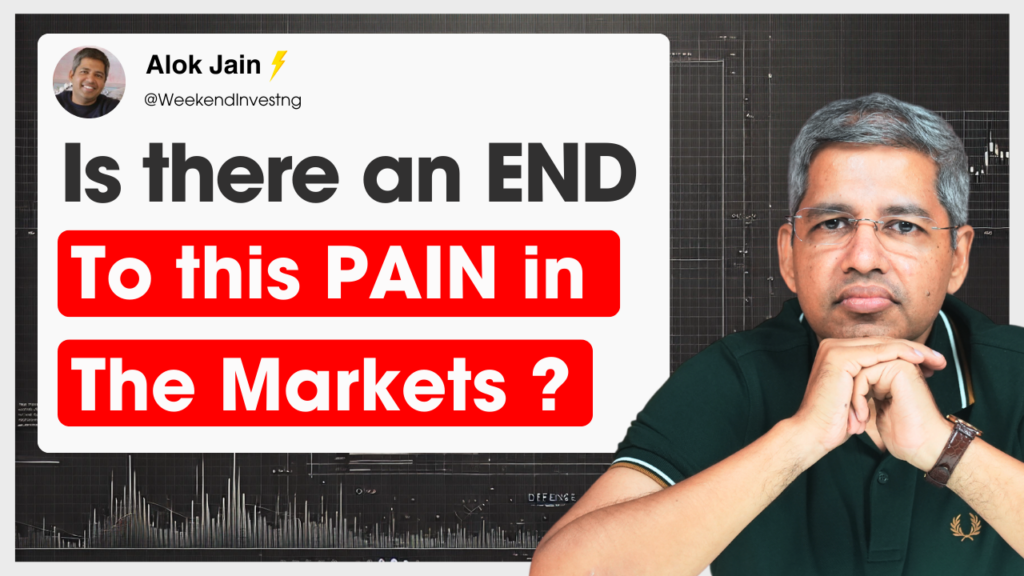
The stocks are just collapsing on each other, and we haven’t yet found the bottom. Today, we’ll essentially go through a journey, particularly looking back at small-cap stocks, and try to discuss if there’s an end to this market pain. This video will be especially useful for those who haven’t been through such cycles before.
If you were to ask any experienced investor, the pain so far is nowhere near what the market is capable of. So, from that point of view, you can either say that the markets are useless, but the problem is that we only want the upside and aren’t willing to take the downside. That’s the main issue, because the market setup works in such a way that you can’t have one without the other. No investor in history has been able to get only the upside without some downside or drawdown.
Given that background and expectation, it’s important to see where you stand. Had you not entered the market at all, what would your situation be?
Where is the market headed?
Market Overview
Well, Nifty tried to make a huge comeback today. It started off in the green and, during the day, nearly managed to close the gap created on Monday morning. But in the last hour, it collapsed back, and we ended up closing just slightly higher than yesterday, by 0.56%. The optimism in the first three to four hours was lost towards the end, suggesting that there’s still a lot of selling happening at every level. Every time Nifty tries to rise, it gets smashed back down.
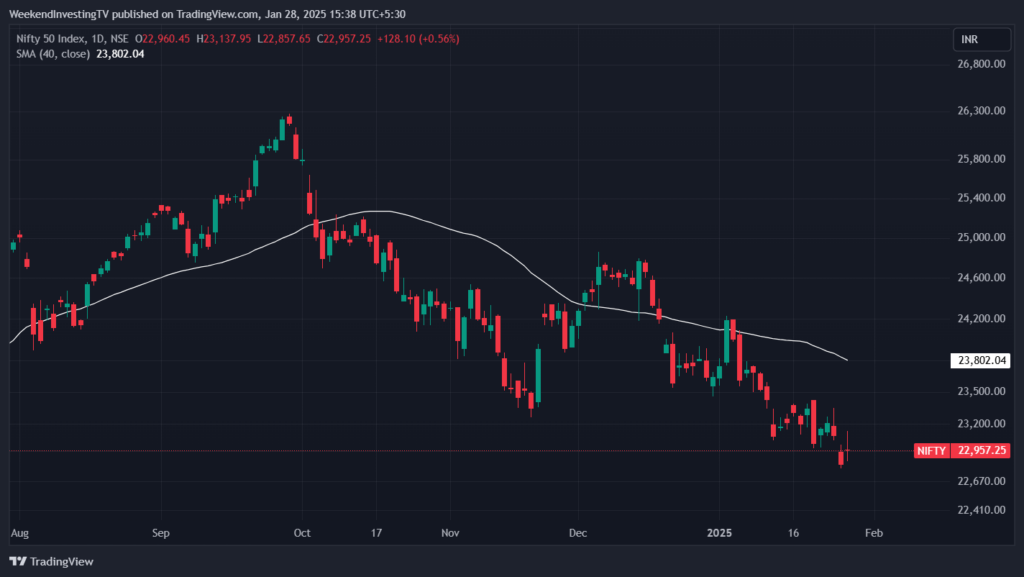
Nifty Next 50
The Nifty Junior closed at 0.3% higher, after hitting a new low, dropping down to 60,000 before bouncing back by nearly 1,000 points. It stabilized for the day but is still very much not out of the woods.
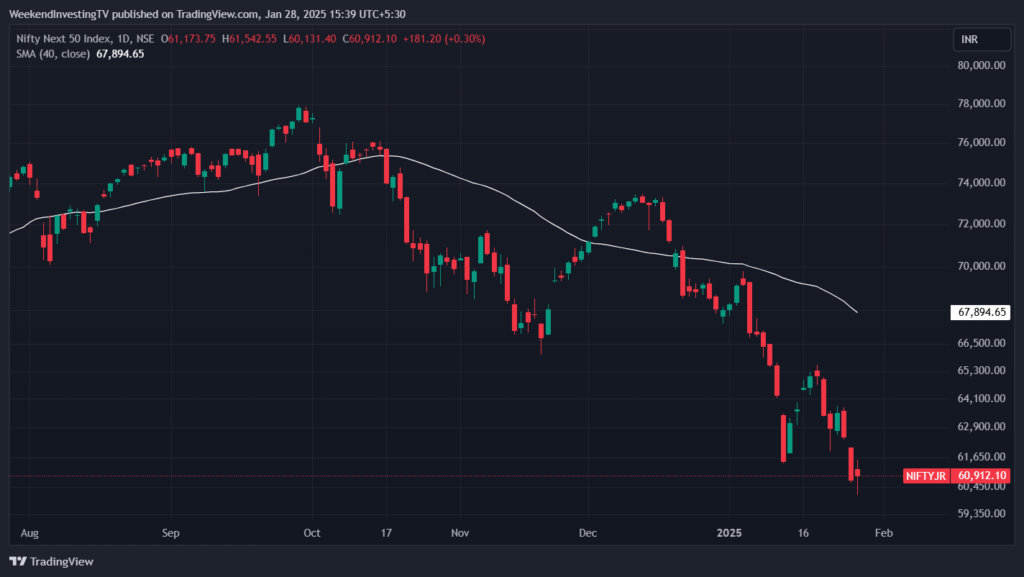
Nifty Mid and Small Cap
The Nifty Midcap closed 0.69% lower, though it did recover a bit from its low point in the first hour. However, given the kind of fall we’ve seen in the last few sessions, that recovery is very minimal.
In the small-cap space, things were equally bad. We saw a drop from nearly 17,000 to 14,800 in just seven sessions. There was some recovery, but it still ended the day 1.82% lower, with more selling in the last hour. This kind of fall sets off a domino effect. Stocks that were put up for margin, or stocks on which loans are taken, start to get dumped. While this doesn’t happen as much in the small-cap space, it’s more common in large and mid-cap stocks. But the selling tends to spiral because of margin calls and derivative losses. When a stock falls, brokers may be forced to liquidate client positions to meet these calls, and this cycle continues.
As prices drop, more margin calls are triggered, and more selling happens, creating a self-fulfilling cycle. This is often when we see market capitulation, which is just a waterfall of selling until it eventually stops at a reasonable point. Right now, the small-cap market is extremely oversold, but there’s no life yet in that space.
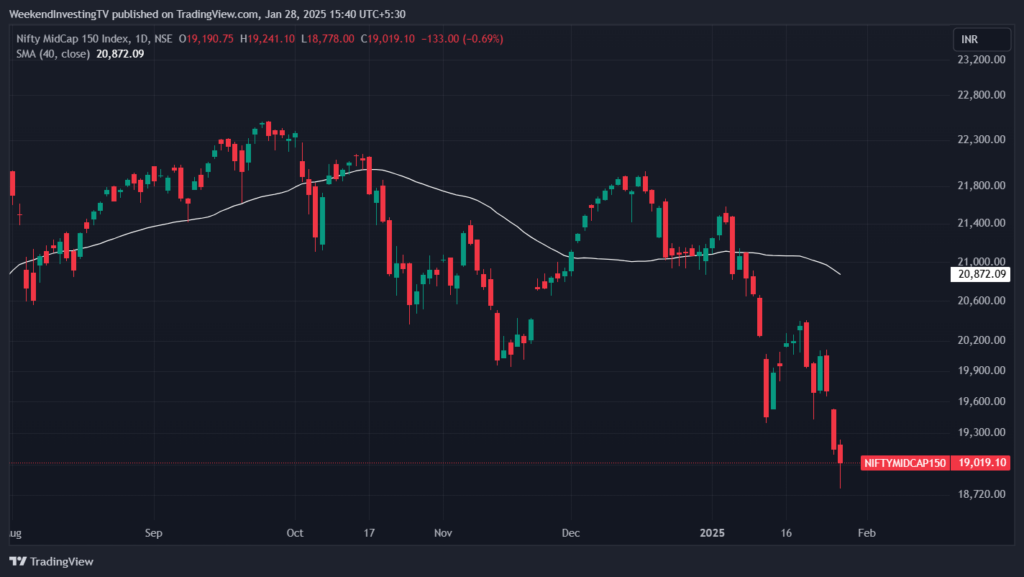

Nifty Bank Overview
Looking at Bank Nifty, I mentioned yesterday that it’s showing some signs of life, which is a positive sign. It’s probably the only bright spot in the market right now. The Bank Nifty gapped up and stayed up, closing 1.67% higher. The RBI has injected liquidity, and India’s 10-year yields have dropped dramatically. There’s talk of a potential rate cut. Bank Nifty, in particular, often leads the market cycle, so if it’s giving any positive signals, it could be hinting at an intermediate market bottom. That’s really the only hope we have at the moment.
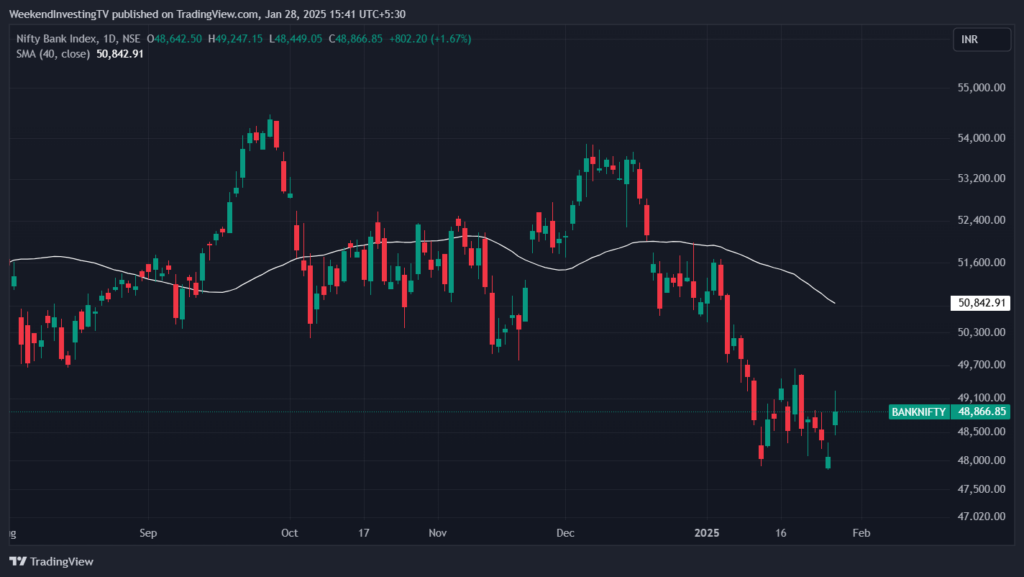
Advanced Declined Ratio Trends
The advanced/decline ratio is better than yesterday but still heavily in control of the bears—327 declines versus 171 advances.

Nifty Heatmap
The Nifty heat map was completely green on the banking and financial company side, with stocks like Bajaj Twins, Axis Bank, HDFC, ICICI Bank, Shriram Finance, and SBI all showing positive movement. However, the Pharma sector was weak, and Autos had a positive session. The Energy sector had a mixed performance, while FMCG stocks were down.
In the Nifty Next 50 space, real estate, financial companies, insurance companies, some PSU banks, consumer non-durables, cement stocks, and auto stocks performed well. However, Energy stocks, some capital goods, Pharma, and even some public sector enterprise stocks did not do well.
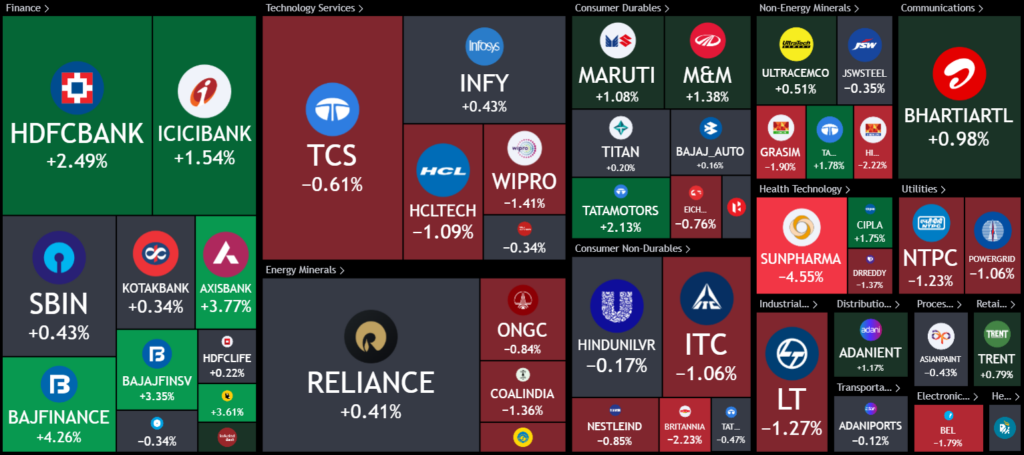
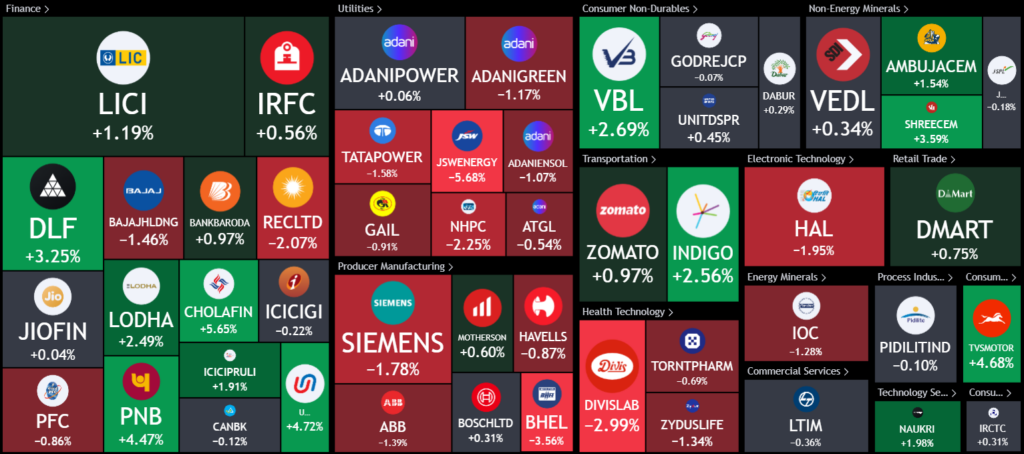
Sectoral Overview
Pharma: Down by 2.3%. Pharma has lost 5% over the last week.
Energy: Down by 1.4%. Energy stocks have lost 6.8% over the past week.
Public Sector Enterprise: Down by 1.2%. These stocks are down 6.6% for the week.
Commodities: Flat, with Metals slightly up by 0.4%.
Autos: Positive, with Private Banking, PSU Banking, and Real Estate all in the green.
Regarding the Banking space, it’s noteworthy that banks have now erased their weekly losses,
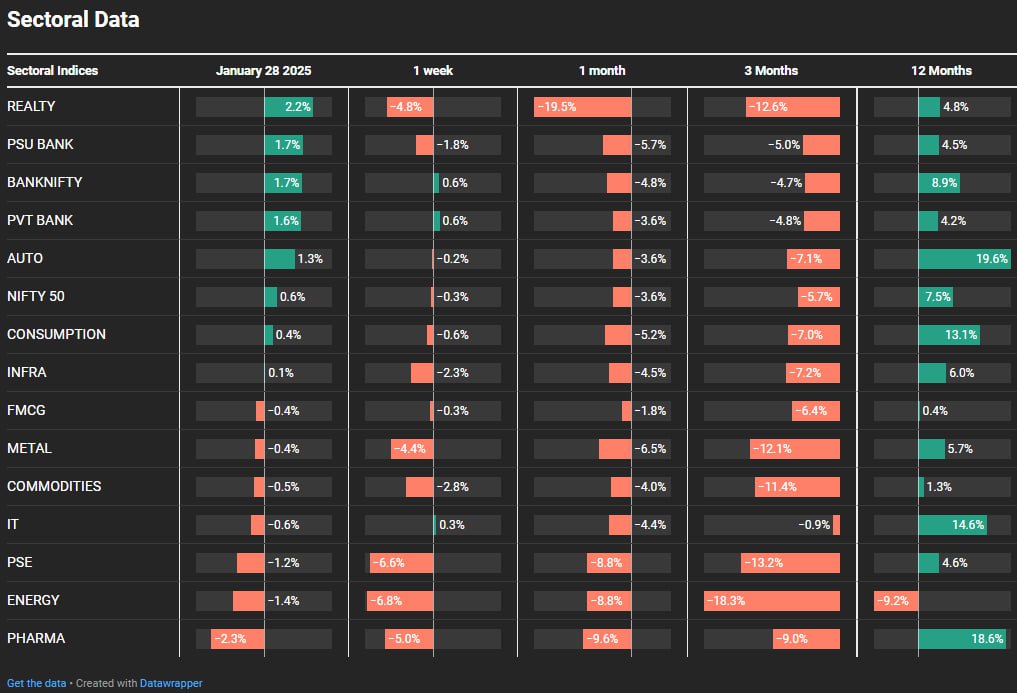
Sectors of the Day
Nifty REALTY Index
Real Estate stocks have also managed to erase some recent losses, though they are still down 19% for the month. Within Real Estate, stocks like Sobha, DLF, and Godrej showed good performance, signaling some potential recovery within the sector.
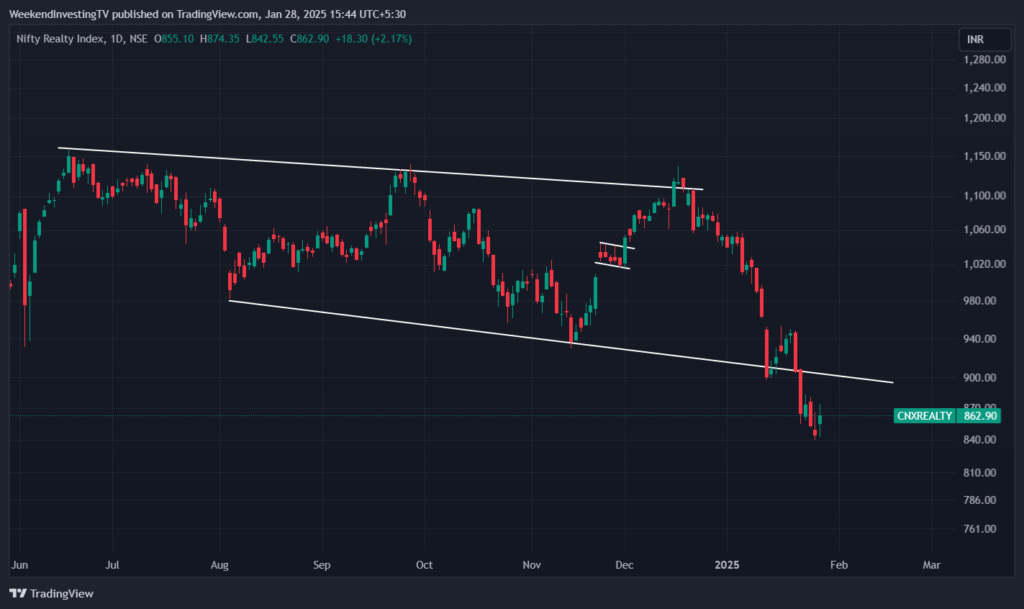
Story of the Day
There’s no denying the pain—it’s real. I’m not downplaying it. But we need to look at this objectively. If you’ve been watching up until now, let’s take a look at the Small Cap 250 Index, which tracks the performance of smaller companies. Looking at the last five years of this index, we see a lot of familiar patterns. The COVID fall in 2020, followed by a sharp rally from March 2020 to January 2022, was followed by a crash and a period of sideways consolidation for about a year and a half.
Then, from mid-2023 (around March), we went into a positive run that peaked in late 2024. Now, we’ve started to come off again. If you step back and look at the chart, nothing looks particularly unusual. Every time we’ve gone through a huge up cycle, we’ve had corrections. And this correction we’re going through now is a reversion to the mean.
The last year’s returns have been wiped out, and the Small Cap 250 is flat, or around a 2% return. But over a longer horizon, the two-year returns are still 28%, which is far above the historical average of 16%. The three-year returns are at the historical average of 15-16%, and five-year returns are still at 23%. So while the short-term pain is real, the long-term picture remains positive.
The key thing to understand is that small-cap investing is not about short-term or even medium-term gains. The context of small-cap investing is long-term. There are market cycles, and you need to compare from peak to peak or bottom to bottom to get a true sense of performance. If you compare from a peak to where we are now, returns may look bad. But the correct comparison should be from one cycle’s bottom to the next.
We’ve analyzed all the 20%+ falls in the Small Cap 100 Index over the years.
We’ve looked at the time taken to hit a 20% drawdown, the maximum drawdown during that correction, and the time it took for recovery to hit a new high. These data points give us an objective statistical framework, so we can look at the market without the emotional aspect.
Here’s a look at the drawdowns from the past 20 years:
- 2004: A 29% max drawdown over 49 days, with recovery happening in 182 days.
- 2006: A 34% max drawdown, recovery in 129 days.
- 2008: A 77% max drawdown due to the global crisis, recovery took about 15 months.
- 2020 (COVID): A 65% max drawdown, recovery in less than 15 months.
- 2022: A 33% drawdown with recovery happening within 400 days.
Currently, we’re sitting at about 20% down, and it’s still uncertain how far we’ll go. But the pattern suggests that, if we’re in a regular correction cycle, we could be getting close to a bottom.
Looking at performance after past corrections, we’ve consistently seen strong rebounds. For example, after the 2004 correction, the market gained 58% in 6 months, 117% in 1 year, and 106% over the next two years. Similarly, after the 2008 crisis, there was a 162% gain in 1 year and a 59% CAGR over the next two years. So, yes, the pain is real, but once the bottom is reached, you can expect some fantastic years ahead.
So, is this enough reason to abandon the market?
I think not. This is the nature of investing—there’s always a period of pain before the rewards. The key is to hold on through the pain, because the rewards that come after it are extraordinary. Look at the long-term investors who’ve been through many cycles, and you’ll see they’re multi-millionaires or even billionaires today because they didn’t let short-term pain derail their strategy.
The pain in the market is temporary, but the rewards that follow can be substantial. If you stay invested, even if you’re down now, you’ll likely see the market bounce back. Be patient, and don’t give up.
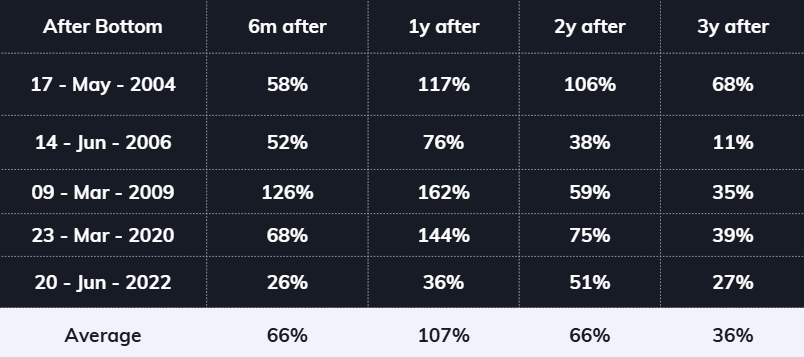
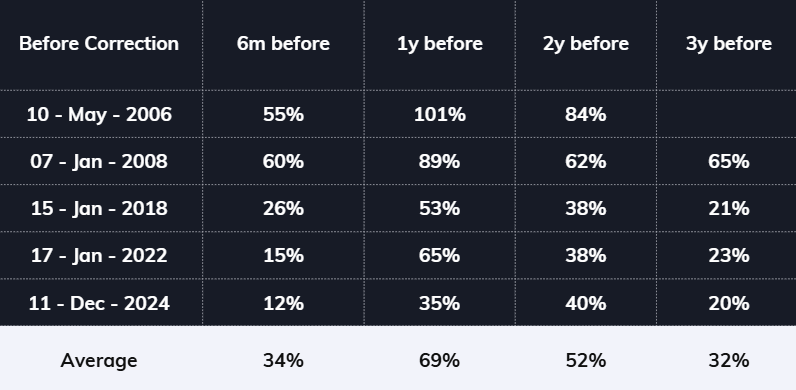
WeekendInvesting launches – PortfolioMomentum Report
Disclaimers and disclosures : https://tinyurl.com/2763eyaz






